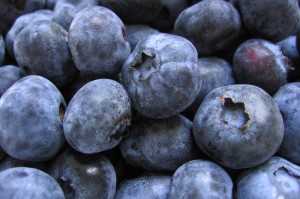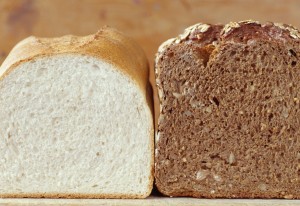 Eating right isn’t just good for your physical health, it’s good for your mental health, too — which is why the 21 Day Body Makeover Plan encourages you to eat whole foods that have a low glycemic index. These foods could help you overcome mood swings and cravings, allowing you to embrace a busy lifestyle with strength and make better diet decisions. What does “low glycemic” mean, and what low-glycemic foods make great snacks for weight-loss? Read below!
Eating right isn’t just good for your physical health, it’s good for your mental health, too — which is why the 21 Day Body Makeover Plan encourages you to eat whole foods that have a low glycemic index. These foods could help you overcome mood swings and cravings, allowing you to embrace a busy lifestyle with strength and make better diet decisions. What does “low glycemic” mean, and what low-glycemic foods make great snacks for weight-loss? Read below!
What is Low-Glycemic Food?
What does “low glycemic” mean? A food’s glycemic index number indicates how immediately it raises blood glucose (blood sugar) levels. Foods which have high glycemic indexes are broken down quickly by the body, and affect your blood sugar level within minutes — basically, high-glycemic foods give you a “sugar high.” High-glycemic foods would be desirable in rare instances (for example, if you’re struggling with drastically low blood sugar levels or running an ultramarathon).
In the 21 Day Body Makeover plan, we’ll work with you to incorporate more low-glycemic foods into your diet. Low-glycemic foods are generally considered healthier than high-glycemic foods because they release energy to your body in a slower, more stable way — letting you digest and absorb the food in a gradual and balanced manner. Not only do low-glycemic foods enable you to feel the sensation of fullness and balance longer, but they also reduce your risk of suffering a “sugar crash” that is often associated with high-glycemic foods.
Furthermore, studies have shown that high-glycemic foods can lead to overeating. For example, if you eat a bowl of processed sugar cereal for breakfast, you’ll likely feel hungrier sooner than if you eat a bowl of bran-based low-sugar cereal for breakfast — causing you to make poor diet decisions and overeat at lunchtime.
So, basically: Low glycemic = balanced, long-lasting fullness and better choices at your next meal. High-glycemic = imbalanced sugar rush and poor choices at your next meal.
What foods should I eat?
 Low-glycemic foods are easy to find if you know what to look for. Avoid sugary and processed foods. These high-glycemic foods break down easily and quickly in the body, making you feel hungry sooner. Examples of high-glycemic foods include sugary cereals, plain white bread, processed pasta, sweetened yogurts, corn tortillas, white rice, and soda. Low-glycemic foods include unprocessed wheat breads (especially sprouted wheat breads), whole-wheat tortillas, nuts, milk, and non-starchy vegetables (like carrots or peppers). For a list of foods based on glycemic index and glycemic load, check out Harvard Health’s list.
Low-glycemic foods are easy to find if you know what to look for. Avoid sugary and processed foods. These high-glycemic foods break down easily and quickly in the body, making you feel hungry sooner. Examples of high-glycemic foods include sugary cereals, plain white bread, processed pasta, sweetened yogurts, corn tortillas, white rice, and soda. Low-glycemic foods include unprocessed wheat breads (especially sprouted wheat breads), whole-wheat tortillas, nuts, milk, and non-starchy vegetables (like carrots or peppers). For a list of foods based on glycemic index and glycemic load, check out Harvard Health’s list.
What do I do about my sweet tooth?
Eat fruit and eat foods naturally sweetened by stevia or xylitol. Although fruit is high in sugar, it’s high in “good” sugar (fructose). Foods sweetened with stevia and xylitol are similarly lower in calories and sugar than most sweets. Compared to everyday chocolate, baked goods, and candy, these low-glycemic options can help you manage hunger and avoid dangerous sugar rushes. With the 21 Day Body Makeover Plan, we encourage you to treat yourself to sweet and satisfying whole fruits. We don’t recommend dried fruits (like raisins or banana chips) or fruit juices, both of which have higher glycemic indexes. Grab a handful of blueberries after dinner, or stash a stevia-sweetened beverage in your bag for when hunger hits. You’ll feel more satisfied and confident about your healthy self.
Want to learn more about how low-glycemic foods can help you lose weight and get healthy? Order the 21 Day Body Makeover Program now!

